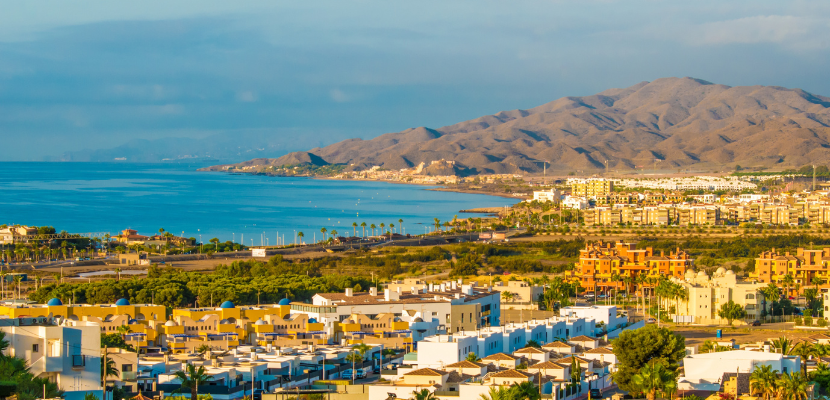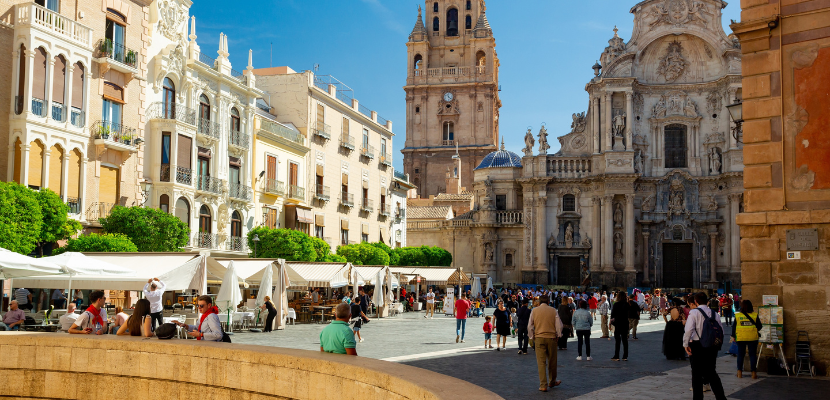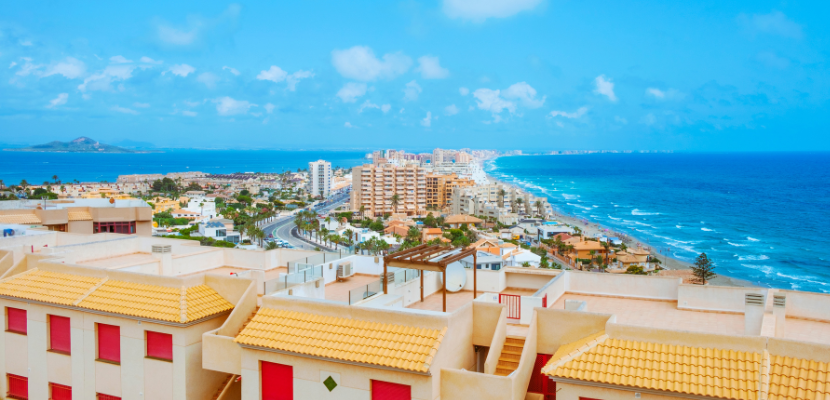
When you're looking for something different from the big-name Costas, or you’re seeking better value in southern Spain – where should you look?
Two regions consistently attract sun-seeking home hunters for their affordability – but also because they’re less developed than the Southern Costa Blanca or coastal Andalusia.
These areas sit next to each other in southeast Spain: Murcia and Almeria.
Aside from their coastlines, both regions appeal for their inland villages, urbanisations, and golf resorts nestled amongst agricultural land. In both, you'll find a broad selection of properties with a budget between £60,000 and £200,000.
But they each have their own distinct qualities. So which might suit you best? Here we explore the key differences.

Backstory and culture
Visitors to both regions will find a rich history and architectural legacy.
Almeria flourished during the Islamic era of the 11th and 12th centuries – its name is of Arabic origin – and in the second half of the 20th century, it developed tourism and intensive agriculture, with crops growing under vast plastic poly tunnels.
This arid corner of Spain is Andalusia’s least developed province, famed for being home to Europe’s only desert – Tabernas – which became the backdrop for spaghetti westerns and classics like Lawrence of Arabia.
Almeria has always drawn an alternative crowd. Hippies gravitated towards the wild volcanic landscapes of Cabo de Gata-Níjar natural park, and artists and bohemians made the whitewashed village of Mojácar their home in the 1960s. Mojácar remains the most fashionable hub of Almeria today.
Murcia’s path has been different. The Moors introduced advanced irrigation systems and a silk industry here too, but it was under Castilian rule in the 13th century that a distinct Murcian culture began to emerge.
Today, about 40% of the region remains agricultural, known as the ‘Orchard of Europe’ for its vineyards, fruits, and cereals. Tourism arrived later than elsewhere in Spain and was focused around the coast – especially the Mar Menor. Murcia’s inland golf resorts sprang up in the early 2000s, just before the 2008 crash stalled their rapid growth.

Tourism today and air access
Both regions saw a tourism increase in 2024, but Murcia’s was more notable, up 6.7%, compared to Almeria’s 1.5%.
Their main tourist magnets are their cities – Murcia city and Almeria city – followed by beach resorts: Mojácar and Roquetas de Mar in Almeria, and the Mar Menor resorts in Murcia.
Murcia has more golf resorts – 20 compared to Almeria’s eight – and its most iconic, La Manga, is undergoing a major revamp. The whole region feels like it’s on the up.
Airport access is another key difference. Murcia’s newer airport at Corvera is convenient, but many homeowners rely on Alicante airport – Spain’s fifth busiest – just over the border in the Costa Blanca. It handled nearly 16 million passengers in 2024.
In contrast, Almeria’s airport is one of Spain’s quietest – ranking 27th – handling just 775,385 passengers in the same year. Lack of flight options is a common dealbreaker for home hunters.

Hotspots and property prices
Affordability is one of the main reasons buyers pivot from the Costa del Sol to Almeria, or from the Costa Blanca to Murcia.
According to Kyero, the average property price in Almeria province is €206,000, while in Murcia it’s €316,000 – reflecting Murcia’s faster property price growth (13.27% year on year). In fact, Murcia has had one of the fastest increases on mainland Spain.
Murcia is especially popular with people from Madrid looking for a cooler summer destination. Almeria is warmer and further from the capital, so tends to attract a different crowd.
In Murcia, property prices are highest in the Costa Cálida beach towns – especially around the Mar Menor in La Manga, San Javier, Los Alcázares and San Pedro del Pinatar.
You can still find apartments in former Polaris World resorts like Hacienda Riquelme or La Torre for around €100,000. Go further inland to Camposol and you’ll find golf resort properties from around €60,000.
In Almeria, aside from Mojácar, British buyers favour Vera, Garrucha, Roquetas de Mar, and the inland village of Los Gallardos. Inland areas like Arboleas and Albox in the Almanzora Valley are also popular, with a budget of around €100,000.
You can find country homes in Almeria from around €50,000, or a four-bedroom cortijo-style property with pool for around €400,000.
Almeria is also known for its rustic, Moorish-style farmhouses – the cortijos – surrounded by olive and almond groves at the foot of the Sierra Cabrera mountains. It’s a taste of “authentic Spain” that many still yearn for.
Which one is right for you?
Almeria and Murcia both offer lifestyle, sunshine, and affordability in spades – but each has its own flavour. The best way to find your perfect spot? Visit and explore for yourself.
Take a look at our Murcia and Almeria region guides for more local insights, or start your property search today by browsing homes for sale in Murcia or homes for sale in Almeria.